Xiaomi Pad 7 – Full Specifications
| Category | Specification |
|---|---|
| Display | 11.2″ 3.2K (3200 × 2136 px), 3:2, 345 ppi, IPS LCD, 144 Hz (adaptive), 240 Hz touch sampling, HDR10, Dolby Vision, 800 nits peak, TÜV Rheinland low blue light & flicker free |
| Processor (SoC) | Qualcomm Snapdragon 7+ Gen 3 (4 nm), octa-core CPU (up to 2.8 GHz), Adreno GPU, Qualcomm AI Engine |
| RAM | 8 GB / 12 GB LPDDR5X |
| Storage | 128 GB / 256 GB UFS 3.1 |
| Rear Camera | 13 MP, f/2.2 |
| Front Camera | 8 MP, f/2.0–2.2 |
| Battery | 8,850 mAh Li‑Po, 45 W wired charging |
| Audio | Quad speakers, Dolby Atmos, Bluetooth 5.4 |
| OS | Xiaomi HyperOS 2 (based on Android 15) |
| Dimensions | 251.22 × 173.42 × 6.18 mm |
| Weight | Approx. 500 g |
| Build | Unibody metal; colors: Gray, Blue, Green |
| Connectivity | Wi‑Fi 6 (2.4/5 GHz), Bluetooth 5.4, USB‑C 3.2, Pogo-pin for keyboard, stylus support |
| Other Features | Corning Gorilla Glass 3; Wet touch support; Stylus & keyboard compatible; AI image engine |
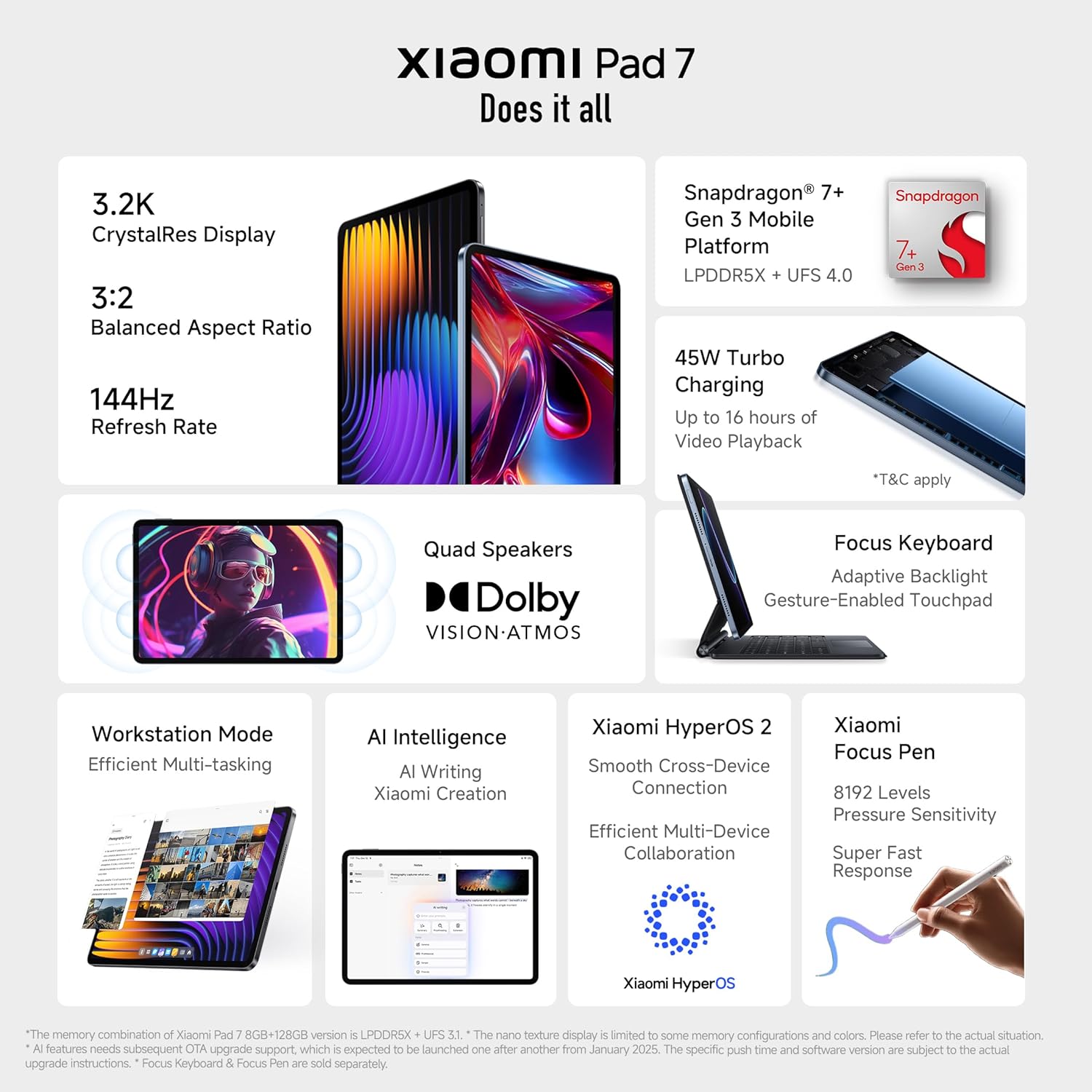
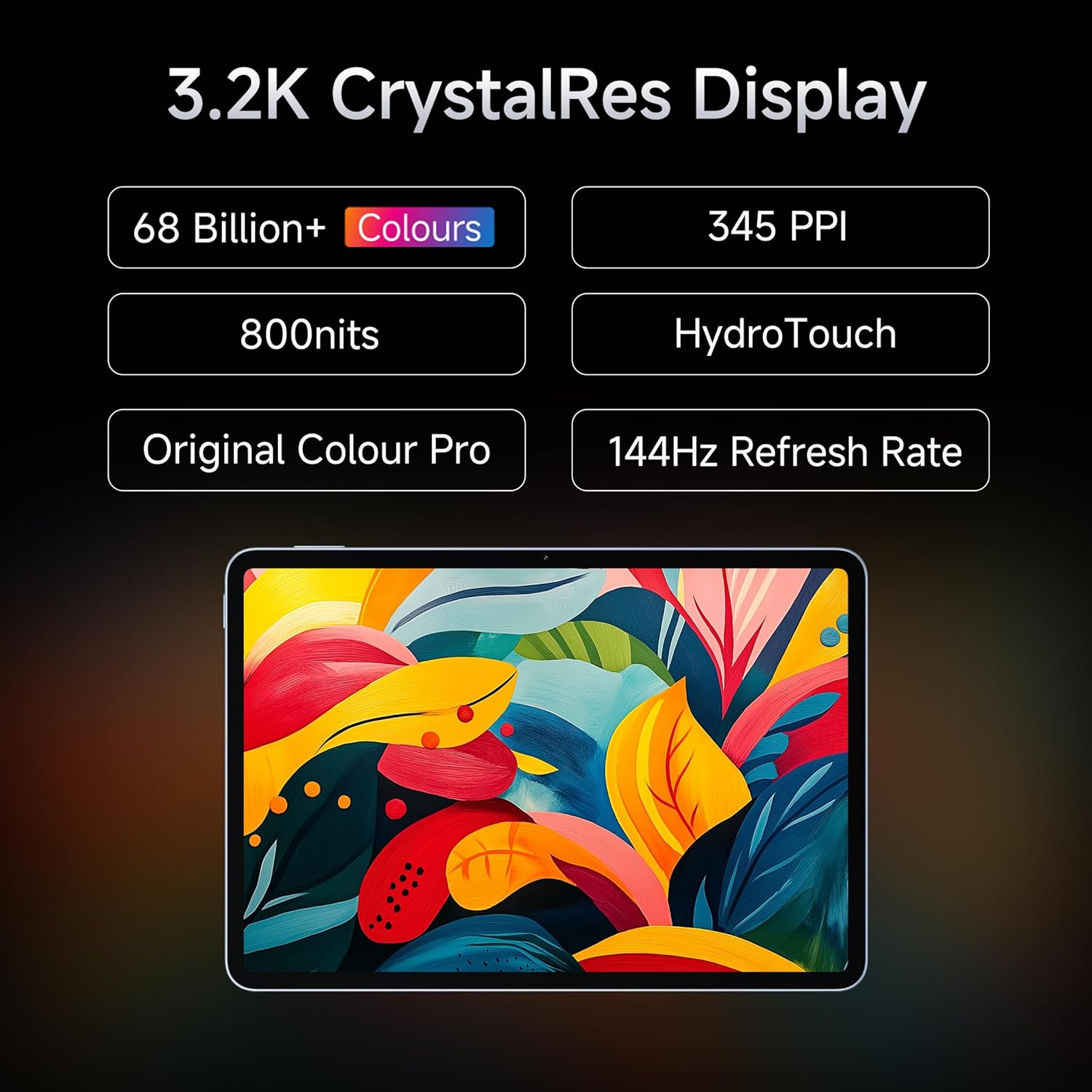
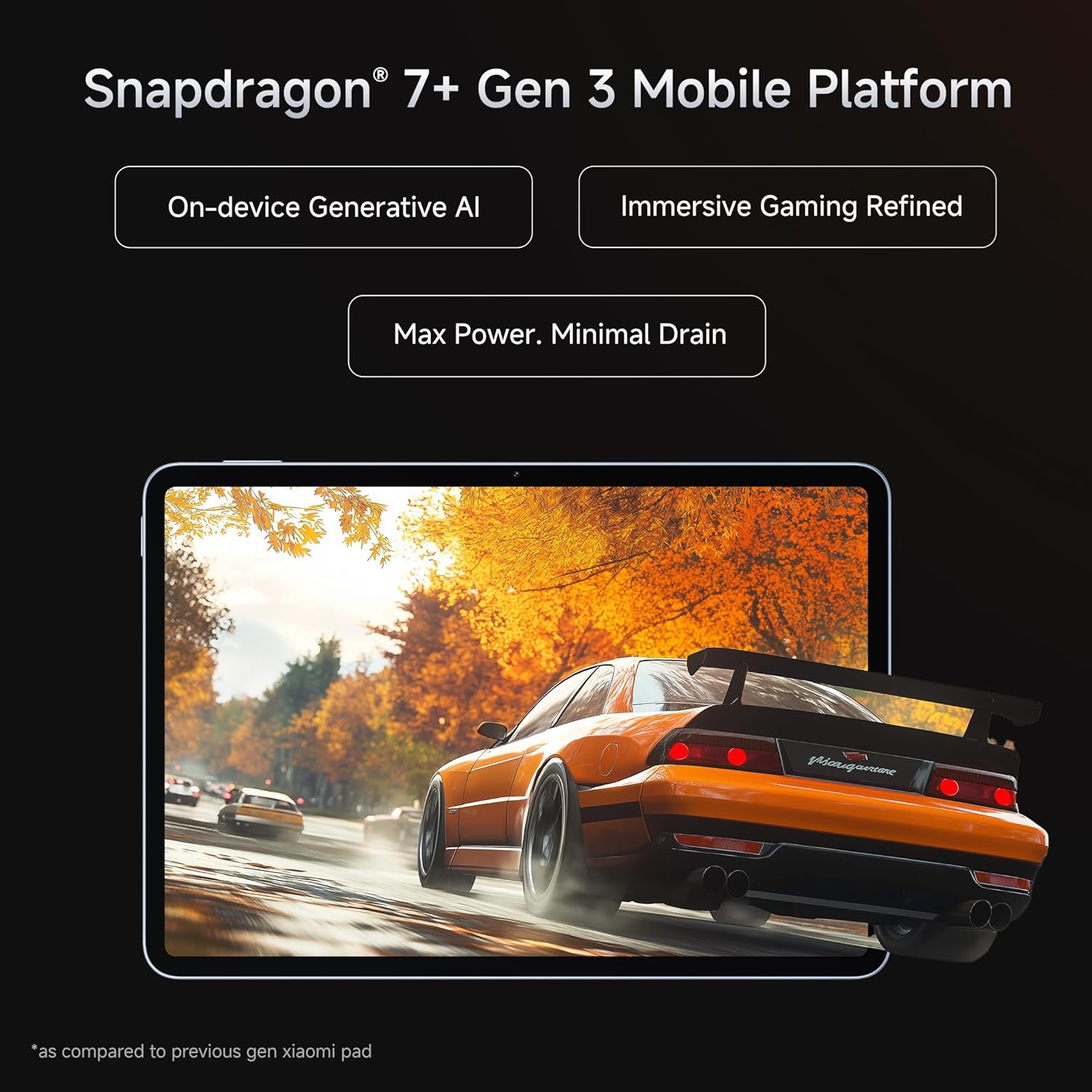
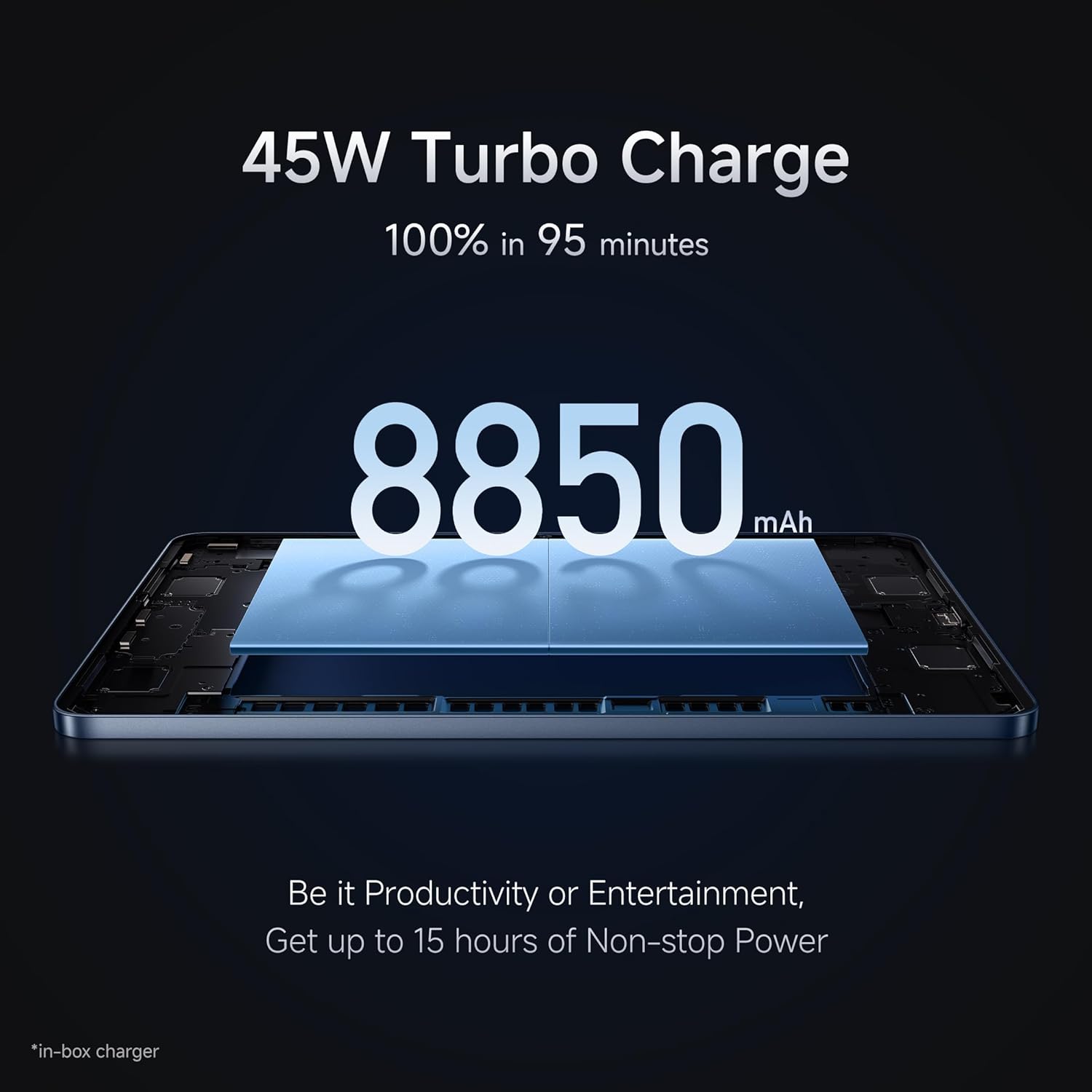
Table of Contents
Introduction
The Xiaomi Pad 7 launched in China in October 2024 and hit global markets—including India—by January 2025 . Positioned as a premium yet affordable alternative to the iPad, it offers cutting-edge specs like a high-refresh-rate display and Snapdragon 7+ Gen 3 performance.
This blog explores every angle—from design to performance, from the software experience to its pros and cons.
1. Design & Build
The Pad 7 upgrades over its predecessors with a slim, 6.18 mm metal unibody chassis, weighing around 500 g . It feels sleek, similar in footprint to the iPad due to its 3:2 screen ratio. Available in gray, blue, and green, it carries forward Xiaomi’s contemporary aesthetic, with a square camera module echoing the Xiaomi 15 line . Design notes:
- Gorilla Glass 3 screen protection
- Library/book mode thanks to 3:2 ratio
- Slight wobble on flat surfaces due to raised camera hump
2. Display
An 11.2‑inch 3.2K (3200 × 2136) IPS LCD shines at 345 ppi with 144 Hz refresh rate and up to 800 nits brightness—exceptional for its class. It supports 240 Hz touch sampling for fluid stylus interaction, plus Dolby Vision and HDR10. TÜV certifications cover eye comfort—low blue light, flicker-free, and circadian-friendly.
Real-world experience:
According to Notebookcheck, the display “is a rarity in the mid‑range tablet class,” delivering vivid visuals and impressive brightness . SlashGear also praised it as “stunning clarity, ultra‑smooth visuals” .
3. Performance
Powered by Snapdragon 7+ Gen 3 (4 nm), the SoC balances power and efficiency. It’s capable of smooth multitasking, media playback, and moderate gaming, with Adreno GPU and an AI engine mi.com.
Redditors note:
“You can multitask for productivity and get decent settings in Genshin still” .
TechAdvisor highlights the 3:2 layout and keyboard compatibility, likening the experience to iPad-like productivity.
4. Memory & Storage
You can choose between 8 GB or 12 GB LPDDR5X RAM, and 128 GB or 256 GB of UFS 3.1 storage . Generous for app use, multitasking, and large file handling.
5. Cameras & Audio
- Rear: Single 13 MP shooter (f/2.2)
- Front: 8 MP selfie cam, good for video calls
- Audio: Quad-speaker setup with Dolby Atmos enhances movies, podcasts, and games
6. Battery & Charging
An 8,850 mAh battery ensures all-day usage, with Xiaomi’s 45 W “HyperCharge” enabling quick top-ups . Notebookcheck confirms “strong endurance despite high-resolution 144 Hz panel” .
7. Software: HyperOS 2
Running Xiaomi HyperOS 2 based on Android 15, it merges MIUI style with cross-device integrations . Features include:
- Smart window management
- Stylus and keyboard support via Pogo-pin
8. Productivity & Accessories
Designed for work:
- Stylus support with 240 Hz touch sampling
- Magnetic keyboard support using four Pogo contacts
- Multi-window and adaptive colors in creative apps
According to a Reddit review, the experience feels “PC-like” when paired with a keyboard.
9. Connectivity
- Wi‑Fi 6 (dual-band)
- Bluetooth 5.4
- USB‑C port with fast charging
- Pogo-pin connector for accessories
10. Where It Stands vs. Alternatives
Compared to Xiaomi Pad 6, the Pad 7 delivers:
- Higher refresh rate (144 Hz vs 120 Hz)
- Better SoC (SD 7+ Gen 3 vs 870)
- Similar build quality with incremental advances
Against the iPad, it offers a 3:2 ratio and stylus support reminiscent of Apple, at a lower price.
11. Pros & Cons
✅ Pros
- Stunning 144 Hz Dolby Vision display
- Balanced Snapdragon 7+ Gen 3 performance
- Spacious memory and storage options
- Long battery life and fast charging
- Strong design and accessory support
- Quad-speaker Dolby Atmos audio
⚠️ Cons
- Single rear camera may disappoint content creators
- Camera module makes it wobble on flat surfaces
- Lacks IP dust/water resistance
- Stylus & keyboard sold separately
- Not for top-tier gaming (e.g., Genshin Ultra settings heat device)
12. Price & Availability
Launched in China late 2024, global rollout began Jan 10, 2025—first in India, then Europe techradar.comcincodias.elpais.com. German retail prices included:
- 8 GB/128 GB: INR 26,999
- 8 GB/256 GB: INR 29,999
In India, price may vary marginally lower due to local positioning.
🙋♂️ Frequently Asked Questions (FAQs) About Xiaomi Pad 7
1. Is the Xiaomi Pad 7 good for gaming?
Yes, the Xiaomi Pad 7 is equipped with the Snapdragon 7+ Gen 3 processor, which is powerful enough to handle mid to high-end gaming like PUBG Mobile, Call of Duty, and Genshin Impact on medium to high settings. However, it may not deliver top-tier gaming performance like flagship chipsets (e.g., Snapdragon 8 Gen 3).
2. Does the Xiaomi Pad 7 support a stylus?
Yes, it supports Xiaomi’s smart stylus (sold separately). With 240Hz touch sampling and palm rejection support, it’s suitable for note-taking, drawing, and design work.
3. Can I use the Xiaomi Pad 7 as a laptop replacement?
For light productivity tasks—like word processing, email, presentations, and browsing—the Xiaomi Pad 7 works well with a Bluetooth or pogo-pin keyboard and stylus. However, it may not fully replace a laptop for heavy tasks like video editing or coding.
4. What accessories are compatible with the Xiaomi Pad 7?
- Xiaomi Smart Stylus
- Xiaomi Magnetic Keyboard
- USB-C hubs and adapters
- Bluetooth mice and keyboards
- USB-C to HDMI cables for screen mirroring
5. Is the display protected by Gorilla Glass?
Yes, the Xiaomi Pad 7 features Corning Gorilla Glass 3 on the front, which offers decent scratch resistance. However, a screen protector is still recommended for extra durability.
6. Does Xiaomi Pad 7 have LTE or 5G versions?
As of now, the Xiaomi Pad 7 only supports Wi-Fi 6 and does not have LTE or 5G models. It’s primarily a Wi-Fi-only device.
7. Which version of Android does the Pad 7 run on?
It runs on HyperOS 2, based on Android 15, offering a clean, fluid interface and Xiaomi’s enhanced cross-device ecosystem.
8. Is there a microSD card slot for storage expansion?
No, the Xiaomi Pad 7 does not support microSD cards. You must choose between 128GB or 256GB internal storage variants.
9. What colors is the Xiaomi Pad 7 available in?
The tablet is available in Gray, Blue, and Green color options, all with a sleek matte metal finish.
10. Is the Xiaomi Pad 7 waterproof or dustproof?
No, the Xiaomi Pad 7 does not have an official IP rating for water or dust resistance. Use it with care around liquids and dusty environments.
11. How long does the battery last on a single charge?
With its 8,850 mAh battery, the Pad 7 can last:
- 12–14 hours of video playback
- 8–10 hours of mixed use (browsing, reading, gaming)
- Full-day usage for light productivity
12. Does the Xiaomi Pad 7 support fast charging?
Yes, it supports 45W wired fast charging, which can charge the device from 0–100% in about 80–90 minutes with the official charger.
13. Where can I buy the Xiaomi Pad 7 in India?
You can buy it through:
- Xiaomi’s official website (Mi.com)
- Amazon India
- Flipkart
- Authorized Xiaomi retail stores
Availability may vary depending on your region and selected variant.
14. Is it better than the iPad 10th Gen?
While the iPad has a slight edge in software optimization and app ecosystem, the Xiaomi Pad 7 wins on display quality (higher refresh rate, better resolution), charging speed, and affordability. It’s a great iPad alternative for Android users.
Conclusion
The Xiaomi Pad 7 is a standout mid‑range tablet offering premium features: high-refresh-rate Dolby Vision display, fast Snapdragon 7+ Gen 3 performance, long battery life, great audio, and thoughtful productivity extras—all at a compelling price. It may not be a replacement for flagships like the iPad Pro or Samsung Galaxy Tab S-series, but for most users—students, creators, casual gamers, and mobile professionals—it represents exceptional value.
If you’re looking for a balance of screen quality, performance, battery, and design without breaking the bank, the Pad 7 deserves serious consideration. Just remember to budget for the stylus and keyboard if you intend to use it for productivity.

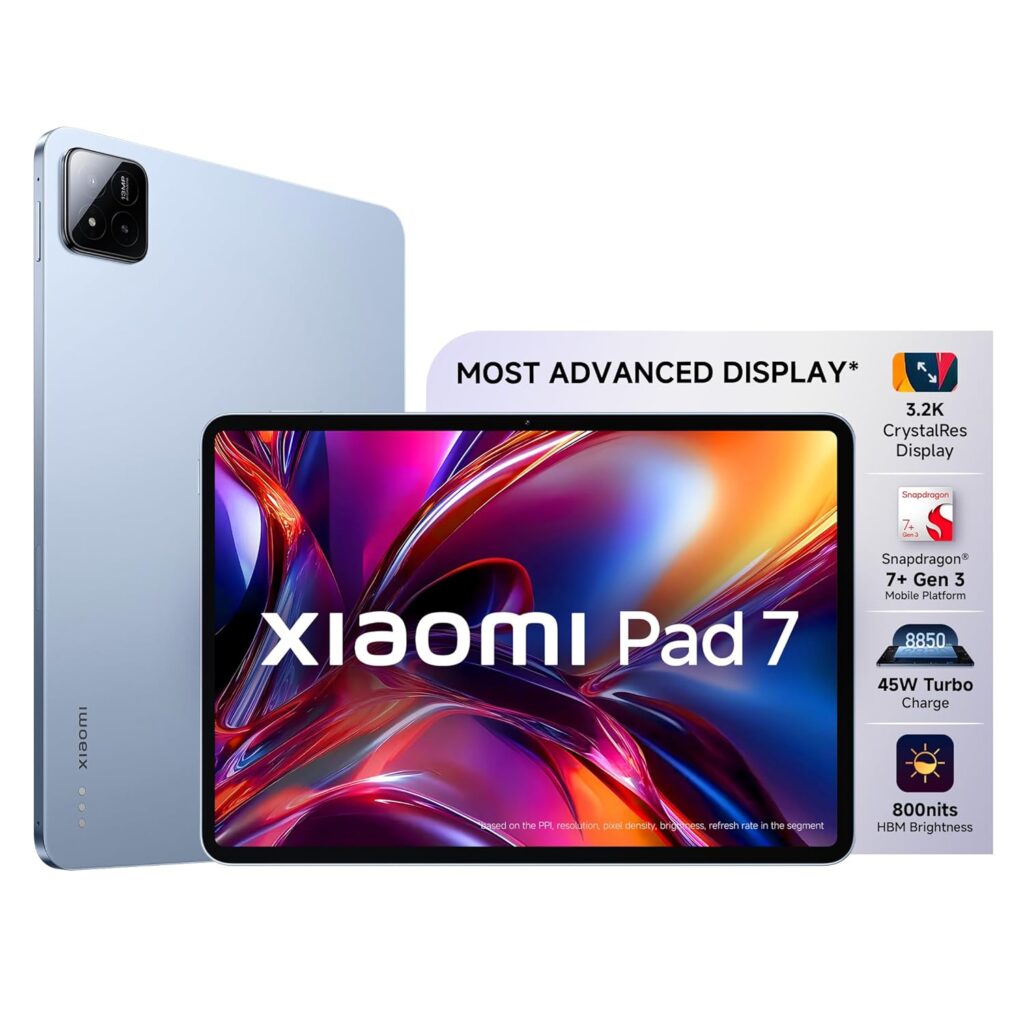

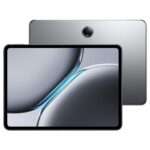
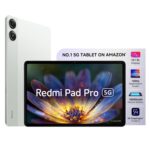
Pingback: Redmi Pad Pro 5G Tablet: Price in India, Full Specs, Pros & Cons Explained - godsayhub.com